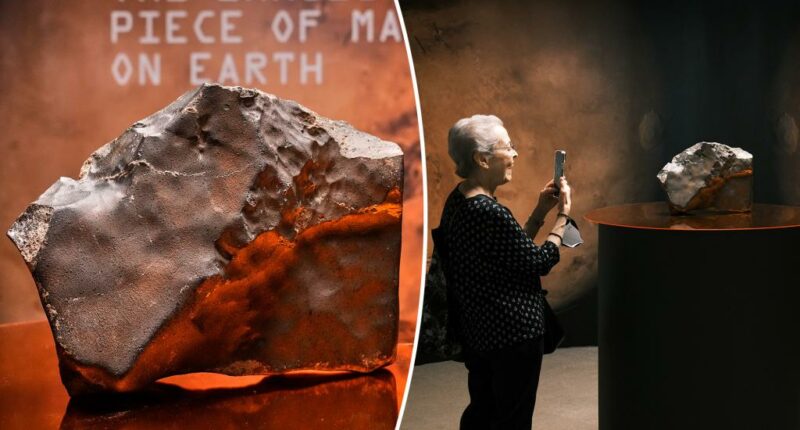Share this @internewscast.com
This record-breaking rock had losing bidders seeing red.
During one of Sotheby’s Geek Week events at New York City’s American Museum of Natural History, a Martian meteorite exceeded its bidding expectations, initially estimated at $2M to $4M.
This meteorite, charmingly named NWA 16788, is no ordinary space rock. Achieving a remarkable price of $5.3 million, it not only became the most expensive meteorite ever sold but also represents the largest and most scientifically valuable fragment of Mars that we Earthlings can access.
At 54 pounds, the meteorite is approximately the size of two basketballs.
“NWA 16788 is a geological time capsule from another world,” Sotheby’s representatives stated. “With fewer than 400 Martian meteorites ever documented, and the majority being pebble-sized, this specimen provides the most substantial connection to a planet that has intrigued humanity for centuries.”
The space rock was discovered in November 2023 by a meteorite hunter — yes, that’s a real job — in the middle of the Nigerian Sahara desert.

Unsurprisingly, the meteorite from the Red planet is, in fact, red. According to Sotheby’s analysts, who have examined it up close and personal, it’s a deep, rusty shade with a glassy crust.
“NWA 16788 shows minimal terrestrial weathering, indicating that its physical and chemical makeup have not been significantly altered since its arrival in the Sahara Desert,” Sotheby’s explained in the release. “In other words, NWA 16788 is likely a relative newcomer here on Earth, having fallen from outer space rather recently.”

Before it was sold, the meteorite was publicly exhibited at the Italian Space Agency in Rome and in a private gallery in Tuscany.
Though the buyer, who was not publicly identified, certainly paid a pretty penny for the rights to the rock, some scientists have reservations about the whole affair — particularly because of the possibilities for new research the meteorite presents.
“It would be a shame if it disappeared into the vault of an oligarch. It belongs in a museum, where it can be studied, and where it can be enjoyed by children and families and the public at large,” Steve Brusatte, a professor of paleontology and evolution at the University of Edinburgh, told CNN.
A mere chunk of mineral it may be, but this meteorite is far from lonely in its exorbitant price.
In 2020, a 4½-pound meteorite crashed through an Indonesian man’s roof. According to experts, the rare rock was over 4.5 billion years old and was worth almost $2M.
In the end, this meteorite was also purchased by a private meteorite collector.
However, meteorites typically land in oceans, deserts, forests and other uninhabited areas, much like NWA 16788.

















